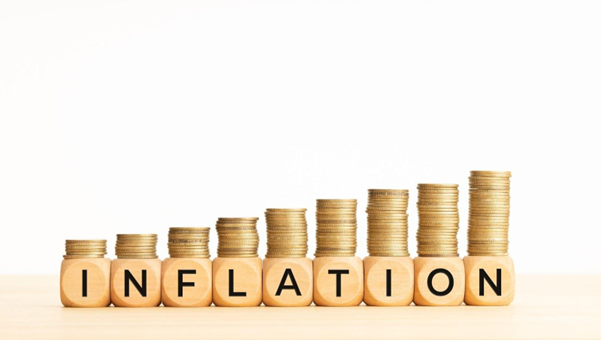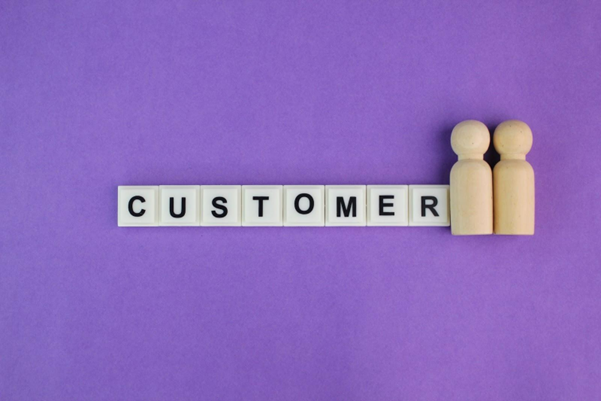As a marketer heading into 2023, the road ahead appears to be challenging, riddled with various challenges that demand attention. The cost-of-living crisis has put a strain on consumer spending, leaving them with limited disposable income. This, in turn, impacts purchasing decisions and requires a deep understanding of their evolving needs and priorities. Inflation rates have surged to unprecedented levels, resulting in escalating prices for goods and services. In fact, the projected worldwide average inflation rate for 2023 stands at 7 percent. Scary, isn’t it?
Undoubtedly, these are challenging times, and we understand the adversities of the near future. However, there is a way forward!
Navigating this landscape and developing strategies that accommodate digital transformation holds the key to combating this challenge. But you have to be adaptable. So how to beat inflation? Before answering that, let’s find out the impact of inflation on businesses first.
How Does Inflation Impact Businesses Worldwide?

Inflation, in simple words, is the general increase in prices of goods and services over time. It means that, on average, the things people buy today will cost more in the future.
For example, if the price of a loaf of bread increases from $2 to $2.20, that’s a 10% inflation rate.
Inflationary periods pose significant challenges for business owners. Not only do they lead to reduced profits, but the value of each dollar earned diminishes with each passing day. A joint report by the U.S. The Chamber of Commerce and MetLife are proof of that. The report highlights that 86% of small business owners express concerns about the impact of inflation on their ventures.
These worries are well-founded, as companies that are not prepared could suffer substantial losses in revenue and market share and, in some cases, even face closure.
Here are a few significant changes that you can see when inflation hits.
- Rising Expenses
As inflation rises, the costs of various business essentials, such as materials, transportation, distribution, utilities, and employee wages, also increase. These additional expenses eat into a company’s profits, placing financial strain on the organization.
- Supply Chain Disruptions
A decrease in the supply of raw materials, coupled with unchanged product demand, can disrupt the supply chains of businesses. The shortage of materials often leads to higher prices for the remaining goods, driving up the cost of the final product as well.
- Elevated Borrowing Rates
Inflation prompts an increase in interest rates, as central banks, like the U.S. Federal Reserve, employ this measure to control inflation and economic growth. However, these higher interest rates make borrowing money more expensive for companies.
- Unsatisfied Customers
When businesses raise their prices to offset growing production and selling costs, these expenses are passed on to customers. As a result, consumer spending on the affected product or service often declines, leading to customer dissatisfaction.
These are some of the detrimental effects of inflation on business. But, no matter how serious the threat is, it is imperative to explore practical approaches to counteract the economic challenge. Let’s find out.
3 Best Proven Ways to Combat Rising Prices for Businesses
While controlling inflation is beyond your reach, you do have some amount of control over its impact on your business.
- Evaluate Pricing Strategy

During periods of high inflation, reassess your pricing approach to mitigate its impact on your business. Compare your offerings and prices with competitors to determine if a price adjustment aligns with the prevailing inflation rate. Raising prices can safeguard your business and adapt to economic changes caused by increased operational costs.
However, be mindful that other businesses are also raising prices. A report by financial firm CBIZ revealed that a significant percentage of Main Street businesses increased their prices. While considering price changes, ensure effective communication with customers to prevent alienating valuable supporters during this sensitive period.
- Reevaluate Product Offerings or Revenue Streams

Instead of solely relying on price increases, consider focusing efforts on selling popular products or services with higher profit margins. Assess the profitability of your offerings and identify those with lower margins, especially if cost increases have impacted your business.
Also, evaluate factors such as supply chain issues or employee turnover that may affect product delivery in the current economic climate. You can streamline or discontinue offerings with lower profitability. This will allow you to allocate resources to more lucrative options, considering both short-term and long-term implications.
- Expense Reduction

Given that inflation drives up prices across the board, always maintain sufficient cash reserves to manage these changes effectively. Avoid locking funds in illiquid assets, as quick access to money may become necessary to cover unforeseen expenses or seize short-lived opportunities.
Determine the amount of capital required to sustain your business during these uncertain times, adjusting calculations to reflect the current economic state. Seek ways to reduce costs and minimize unnecessary expenditures, allowing for increased savings when needed.
These are some ways you can combat inflation. But do you know one of the primary strategies to maintain profitability and financial stability during this time is cost reduction?
In the pursuit of cost reduction, growth marketing emerges as a powerful tool that outperforms traditional marketing approaches.
Unlike traditional approaches with high upfront costs for advertising and promotions, growth marketing focuses on a data-driven, customer-centric strategy. This results in a more efficient allocation of resources, ensuring that every marketing dollar spent yields maximum returns.
Let’s have a close look at why growth marketing can be your way out in these tough times.
Why Should You Opt for Growth Marketing during Inflation?

In the face of rising inflation, businesses must navigate the challenges by embarking on a digital transformation journey. At the core of this transformation lies growth marketing. With its data-driven, customer-centric approach, you can ensure optimal resource allocation, generating maximum returns on every marketing dollar. Here are some of the reasons:
- Cost-Effective

Growth marketing’s emphasis on a data-driven approach revolutionizes how businesses allocate their resources efficiently. With access to real-time data and advanced analytics, you can gain valuable insights into consumer behavior, preferences, and trends.
This data-driven approach will help you with making informed decisions and optimize marketing campaigns. As a result, you will enjoy maximum impact and return on investment. The scalability and flexibility offered by digital platforms in growth marketing further contribute to their cost-effectiveness.
You can reach wider audiences without incurring significant additional costs, thanks to the expansive reach of online channels. You can also adapt your strategies quickly to changes in the market or consumer behavior and address challenges efficiently while maintaining control over your marketing budgets.
- Easy Measurability

While cost reduction is important for survival, it’s essential to focus on cutting the right expenses. Merely eliminating marketing efforts that yield no returns is wise, but completely discarding your entire marketing strategy is not advisable.
The advantage lies in the measurable nature of growth marketing strategies, thanks to the analytics and background data provided by digital campaigns.
By establishing key performance indicators (KPIs) such as spend rate, cost per conversion, and audience metrics, you gain insights into campaign success. This analysis will help you determine which campaigns are effective and which ones fall short.
- Agility and Adaptability

In an inflationary market, market uncertainties and shifting consumer behaviors become even more pronounced. This is where growth marketing truly shines with its iterative and experimental nature.
By constantly testing and analyzing data insights, you can swiftly adapt your strategies and tactics. This will help you stay relevant and competitive in a landscape that is rapidly evolving.
The iterative nature of growth marketing allows you to continuously refine your campaigns based on data insights. You can experiment with different approaches, measure the results, and make necessary adjustments to optimize your marketing efforts. This agility ensures that you stay ahead of the curve.
Not just that, you can also effectively address challenges posed by inflation and, as discussed, already shifting consumer behaviors.
- Scalability and Reach

Traditional marketing channels often involve higher expenses, such as print media or physical distribution, which can be limiting for businesses with tight budgets. With large-scale digital transformation, you can extend your marketing efforts to a wider audience without incurring exorbitant costs.
The expansive reach offered by digital channels opens up new avenues for businesses to connect with their target customers effectively.
By embracing growth marketing, you can tap into the vast online community, where potential customers actively engage and seek information. The power of digital platforms allows you to reach individuals across different demographics, geographies, and interests. This ensures that the message reaches the right people at the right time.
There you have it! These are the benefits you can incur by employing growth marketing for your business. But the next question that you might have is – how do I beat inflation with growth marketing? We have the answer for that as well. Let’s see how.
How to Effectively Use Growth Marketing Amidst Inflation?
Now that you understand the benefits of growth marketing, the step is to use it in your strategy effectively. Here are seven key ways to harness the power of growth marketing:
- Targeting Cost-Conscious Consumer

During times of inflation, consumers become increasingly conscious of their spending and seek ways to get the most value for their money. As prices rise, they become more price-sensitive and cautious about their purchasing decisions. This shift in consumer behavior can present a unique challenge and opportunity for you.
With growth marketing, you can effectively target and engage this audience. Begin by tailoring your marketing messages and promotions to highlight the value, affordability, and quality of your offerings.
For example, a clothing retailer can use targeted digital ads to reach consumers searching for affordable clothing options, showcasing their competitive pricing and value-driven offerings.
- Optimizing Campaigns for ROI

Inflationary periods call for maximizing returns on marketing investments. In such times, it becomes important for you to make the most out of your marketing investments.
With growth marketing in its place, you can easily analyze real-time data and optimize campaigns for better ROI.
For instance, an e-commerce company can track and analyze conversion rates, customer acquisition costs, and revenue generated. This will help them identify and prioritize high-performing marketing channels. As a result, each marketing dollar they spend delivers maximum value.
- Agile Pricing Strategies
With inflation, pricing strategies help maintain profitability. Growth marketing allows you to experiment with dynamic pricing and promotional offers based on consumer demand and market trends.
For example, a ride-sharing platform can use surge pricing during peak hours while offering discounted rates during off-peak times. This will help them effectively manage supply and demand while maximizing revenue.
- Leveraging Data to Anticipate Consumer Needs

Generally, people change the way they shop and what they like to buy during inflation. They might look for cheaper options or different products altogether.
With growth marketing, you can keep a close eye on what customers are doing in real time. You can see how people’s preferences are changing and how their behaviors are shifting. This information is super valuable because it helps you adjust your strategies.
For example, you can see if people are buying less of one product and more of another or if they’re looking for deals and discounts more often.
- Enhancing Customer Retention

When prices are going up and things are getting more expensive, it becomes really important for businesses to keep their customers happy and come back for more. This is called customer loyalty.
Loyalty means that customers like a particular business and keep buying from them instead of going somewhere else. With growth marketing, you can use tools to understand what your customers like and what they want.
For example, let’s say there’s an online subscription service that offers videos and shows. They can look at the data and see which types of videos their customers watch the most. Then, they can give special discounts or offer exclusive content that matches what each customer enjoys. This makes customers feel like the service is made just for them.
These are some of the best ways to implement growth marketing effectively. Use them, and that would be your secret to sustaining amidst economic uncertainties.
Ending Words
In times of rising prices and changing consumer behaviors, you need to be smart and efficient with your marketing efforts. Growth marketing offers a solution by optimizing and maximizing the impact of your marketing investments.
By optimizing marketing efforts and delivering real results, growth marketing allows you to navigate changing consumer behaviors and preferences effectively.



